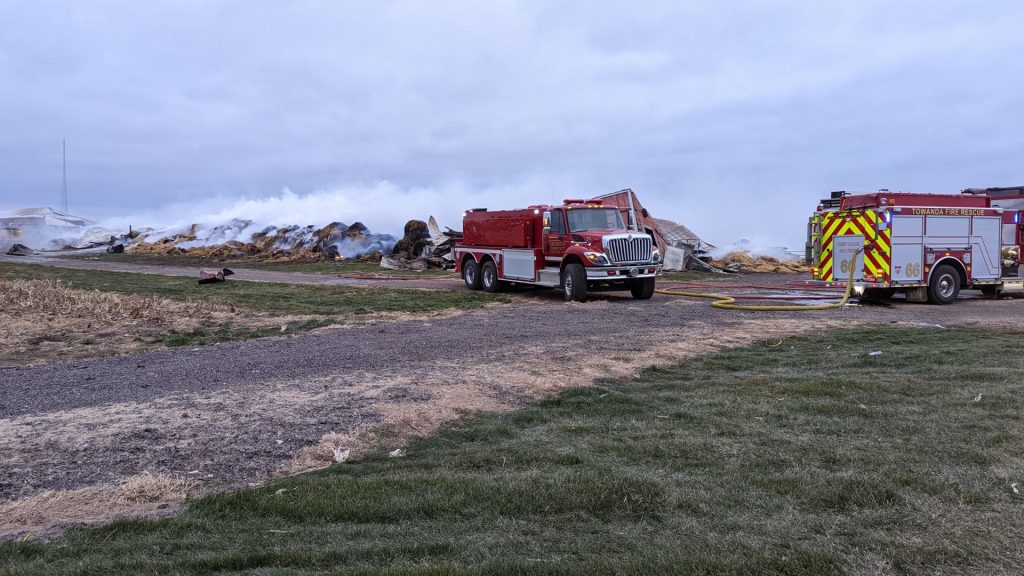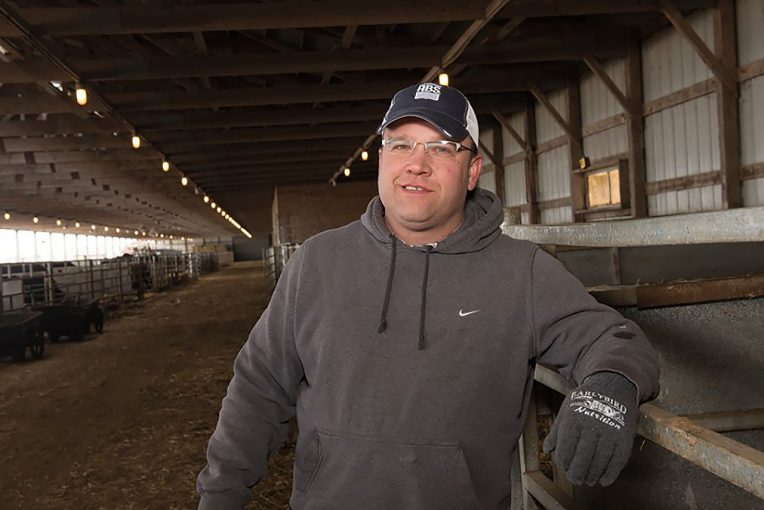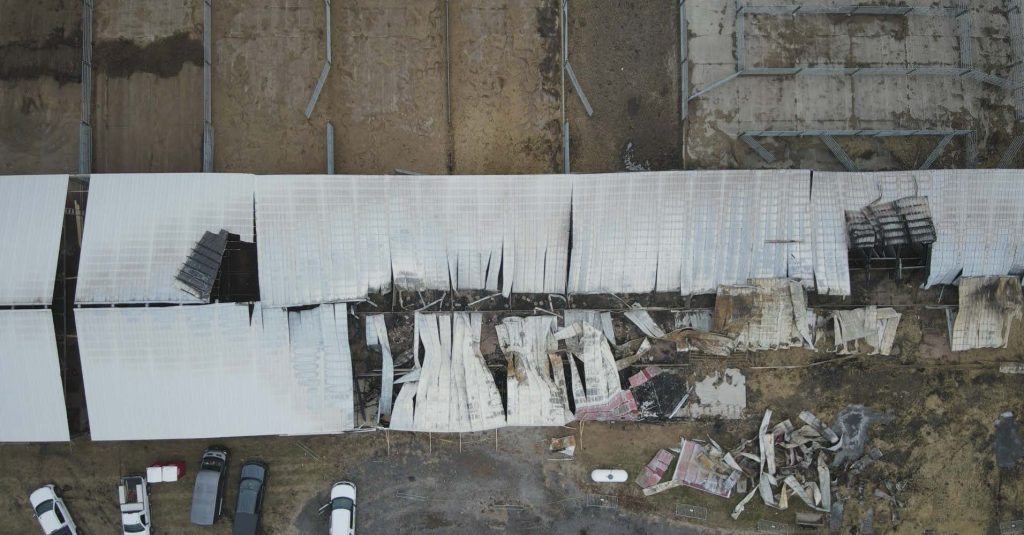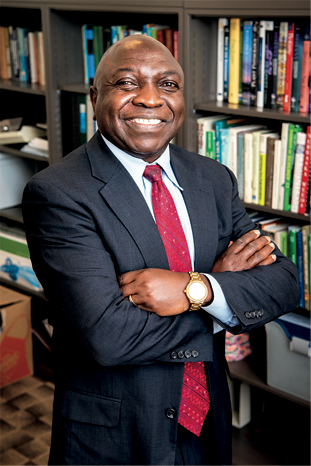In the early hours of November 18, 2022, Jason Lindbom ’93, farm manager at the Illinois State University Farm in Lexington, got a call from the chief of the local fire department. It was to the point.
“There’s a fire out at the ISU farm; come on out,” Chief Jason Birkenbeil of the Lexington Fire Department said over the phone as he made his way to the scene.
It was 12:47 a.m. when Lindbom took the call. An alert deputy with the McLean County Sheriff’s Office had reported the fire only seven minutes earlier. It was a cold, windy night with west winds and temperatures in the low 30s. Lindbom dressed quickly and headed out the door. At less than three miles, the drive from his house to the farm would take just a few minutes.
On the way he made phone calls. The first call was to a staff member who runs the beef barn to check on animals, then he called Dr. Fanson Kidwaro, chair of Illinois State’s Department of Agriculture. Kidwaro would notify Dr. Todd McLoda, dean of the College of Applied Science and Technology. Lindbom knew that the phone chain was set up so that the original 911 call would notify the University’s Environmental Health and Safety office (EHS).
He also knew from the phone call to his beef herder that most of the cattle were already out of the barn before the fire was discovered. A remaining two bulls and nine other cattle by instinct had walked themselves out of direct danger before being moved to safety. The farm is home to over 150 head of beef cows, a swine operation of about 120 sows, a sheep flock totaling about 50 ewes, and one llama. Once Lindbom knew that all the animals were safe and away from the smoke, his biggest worry was the size of the fire and how much damage had already been done.
“When I arrived, over half of the barn was glowing orange. That was the south half where we have hay and straw bedding to keep the cows comfortable.”
Jason Lindbom
“I was thinking, ‘How big of a fire are we talking about?’” he said. “When I arrived, over half of the barn was glowing orange. That was the south half where we have hay and straw bedding to keep the cows comfortable.”
He spoke to Chief Birkenbeil to get up to speed. Eventually, 50 firefighters from 11 area fire departments would fight the blaze.
“I had a good idea of what we were dealing with,” Lindbom said. “Progress was already being made containing it to the north, but the south was too intense. They were just working to keep it from spreading. It was all they could do.”
By mid-morning, about 15 hours after it started, the fire was out. Other than afternoon debriefings with university staff—including Kidwaro, McLoda, and EHS personnel; followed by a joint meeting with the state fire marshal and Birkenbeil; and a quick trip home for dry clothes—Lindbom was at the farm until 6:30 the next evening. By then his concerns had shifted to the how and why of the fire. The day before, the farm had passed a monthly facilities inspection designed to check the welfare of the animals and upkeep of the farm.
“Nothing from that inspection points to what happened,” he said. “There was a small dorm fridge for animal perishables and a heater that were the only two things plugged in at the time, and neither of those were the cause. It’s still under investigation.”
Fires are unsettling, and Lindbom feels that unease since the cause remains a mystery. But he knows things could have turned out worse.
“I take a lot of pride in this place, and when something happens on your watch, you feel horrible,” he said. “No one wants this place to succeed more than me. Questions keep rolling through your head. You just don’t know what happened.”
Kidwaro has no doubt that Lindbom did his job well that night.
“I applaud Jason Lindbom’s hard work and dedication to the ISU farm,” Kidwaro said. “His quick response saved the animals and got them to safety as firefighters fought the fire all night. His dedication to the farm was also evident as he joined the firefighters in trying to extinguish the fire.”
Lindbom said a lot of people helped the cause.
Tasha Bunting with the Illinois Farm Bureau and ag faculty member Cori Malone, M.S. ’15, both helped temporarily relocate cattle to two neighboring farms. Lindbom is grateful to those farmers—Dave Duzan and Daniel Mackinson—for their generosity, especially since animals only had to be transported a few miles.
He was also thankful to Malone and Assistant Professor Dr. Drew Lugar for helping with the load out and relocation of cattle and wherever else there was a need. Lugar’s help didn’t end there. Students from his Livestock Parturition class will be at the farm during February’s calving season to observe and assist in the birthing process, as part of their class.
“They will help ensure that our newborn calves get off to a great start,” Lindbom said.
Lindbom also had help from staff members Garrett Conaty, William Marquardt, and Jessica Sholtes and from student workers Paige Bianchi, Joel Litwiller, Alison Schlesinger, and Cameron Baker.

In addition, the ag department’s administrative aide, Sally Little, made sure everyone was safe and had food and water. And Facilities Planning, Design, and Construction has been helping get the farm ready with climate-controlled indoor space and recovery pens for calving season.
Lindbom has been the farm manager since 2017, and he’s lived the farm life all his life. He’s happy to see a return to some routine in doing the work he knows and loves. He can look out and see work being done to restore the 700-foot barn that was nearly cut in half by the fire. He appreciates all the help from so many.
“This was just an overall great team effort,” he said. “All our cows are back now. We’re in good shape.”



